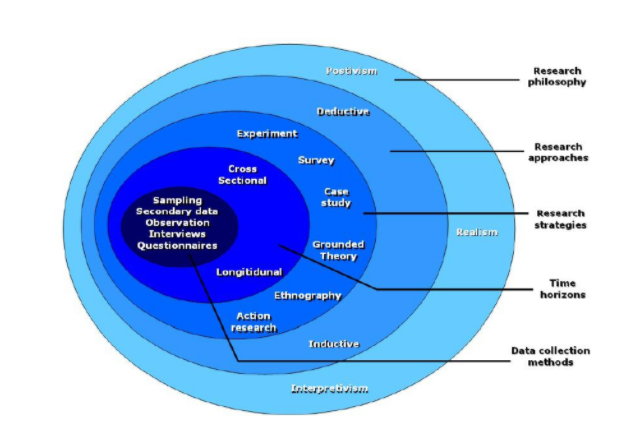Effective Approach to The Research Methodology
- ManagementPaper
- Mar 06, 2021
A research methodology is the most crucial part of a research paper. It makes research a complete and a successful one. Every action has got its particular way of performing it. Similarly a particular research needs to follow a particular method to yield proper results. It is similar to a path that will make the research gain acknowledgement.
Definition of Research Methodology
The various methods and tools used to find out the result of a study and justify it is known as the research methodology. It is a research’s contextual framework. Research methodology is not only a part of the research paper but forms a brief part of both research proposal and research abstract.
Various Elements That Make Up the Research Methodology
In the section of research methodology, the most important element is the raw material, that is, the available and gathered data and information. Data is available in two forms: primary and secondary. The primary data refers to the first hand or raw data which is being collected by the researcher through surveys and interviews. Whereas, secondary data refers to the previously existing or collected data from the online dataset such from journals, articles and reports.
In a well-written research paper example, you can find a research onion which is used in order to understand how to conduct the research and its various stages. This helps in the efficient understanding of the research methodology and well-conduction of the study. The five stages of a research onion are:
- Research philosophy
- Research approach
- Research strategy
- Time horizon
- Data collection methodology

The method and the entire process of data collection is further broken down into various steps. A proper research paper outline will have the following elements in its structure:
Chapter 3: Research Methodology
3.1 Introduction: Here, you will write the various steps that are involved in the research methodology section. In short, you will have to explain to the reader what will be your approach to conduct the research methodology.
3.2 Research philosophy: the research philosophy is associated with the development, nature and source of knowledge. It tells the way in which the information will be gathered, analysed and then used for deciding a particular outcome of the research. The different types of research philosophies are Interpretivism, Positivism, Realism and Pragmatism.
3.3 Research approach: The procedures and the plans of the research that helps to span the broad assumptions steps to the detailed methods involved with collection, analysing and interpreting data.
3.4 Research design: The framework of the research techniques and methods that are being chosen to conduct the research is known to be as the research design. The design of a research explains the kind and subtype of the research. The various kinds of research design are: correlational, descriptive, experimental and quasi-experimental research.
3.5 Data collection method: There are two kinds of data: primary and secondary, hence the data collection method for each of them are different, namely, primary data collection method and secondary data collection method. The primary data collection method can be further divide into two parts:
- Quantitative research method: These are the methods in which numeric data with proper statistics are being collected. The data is being collected by conducting, commonly, surveys among a specific group of people who are directly connected to the problem of the research. It is their response which can help to decide the outcome of the research. A particular set of questions may be sent to them, which has to be filled up by them and returned back to the researcher. It is the duty of the researcher to note those responses down.
- Qualitative research method: These are the methods in which the data collected is subjective, theoretical and non-numeric in nature. These data do not have any kind of statistics or numeric value. The method used is by conducting an interview among a specific number of people belonging to a common background that is linked to the problem of the research.
The Secondary Data Collection Methods are:
- Thematic analysis: Two variables are chosen from the topi, one independent variable and another one dependent variable. Based on both the variables, at least two themes are being chosen which are discussed in detail. Authentic data and information are being collected from various existing literatures and aligned with the facts in this thematic analysis.
- Case study analysis: Two significant case studies related to the problem of the research paper are chosen and discussed in detail. The various perspectives of the case studies are analysed to get results on the problem. Even here, validating the facts and information retrieved by the researcher are a must by citing them.
To determine which kind of data collection method is to be used, is a tedious task for the researcher. But with the expert solutions provided by the team of ManagementPaper, the methodology becomes quite easier to be chosen.
3.6 Data analysis method: Both the secondary and primary data are analysed critically to yield results for the research. For the primary data, questionnaires have to be made for both surveys and interviews. The responses of the surveys have to be represented in the form of tables, graphs or pie-charts. Once you are done representing tem, based on the statistics, you can draw the results from the survey. In case of the interview, the responses of the respondents are represented in a table form. Their answers are tallied and it is being noticed how many are for the research paper topic and how many of them are against it. Likewise, the result of the interview is concluded.
3.7 Sample size: The sample size is only applicable in case of primary data collection methods. Sample refers to the group of respondents chosen for the survey and interview. The sample size for a survey is much more than that of an interview. The sample has to belong from a common background and must possess interest towards the topic of the research paper.
3.8 Ethical consideration: During the survey or interview, a responder is asked to provide a few personal details. But it is the responsibility of the researcher to keep the privacy of data of these responders intact and follow the various data protection protocols.
3.11 Research limitations: Research demands enormous time and knowledge. And so it comes up with a lot of challenges and limitations too. In this section, you have to mention the various hurdles that you faced during conducting the research.
3.12 Timeline: Deadline is a scary thing for a research but with proper effective planning, it is not an impossible task. A schedule of the entire research methodology is being framed, which states how the methods were planned and worked on.
Effective Tips for Writing A Strong Research Methodology
Research Methodology is the section that interests the readers the most. So it is highly important to hook the readers to this section. The following are some of the tips that might attract the attention of the readers:
- Focus on the research questions and objectives: Justify why the chosen methods are apt for the objectives and convince the readers that you have chosen the best method to answer the research question and problem statement mentioned in the research paper introduction. Relate these to the research problem.
- Citing relevant sources: You should be citing evidence to support your statements and discuss your way of evaluating the research methods and approach. Also show that you have identified a research gap and with your study, did fill it up.
- Do not bore the readers: Your work should be read by the readers. The common and known thighs do not need much explanation as too much of it will bore the readers. Rather the less-common aspects need explanation.
- Place in a proper order: The methods used and its findings should be placed in the chronological order throughout the entire research methodology section. This will not only help the reader to understand the study effectively but will also give your research paper a cleaner look.
If you still not sure about how to start off with this research methodology section, ask the Management paper for an effective and affordable paper writing service .They can help you pull off good grades with ease and convenience.








